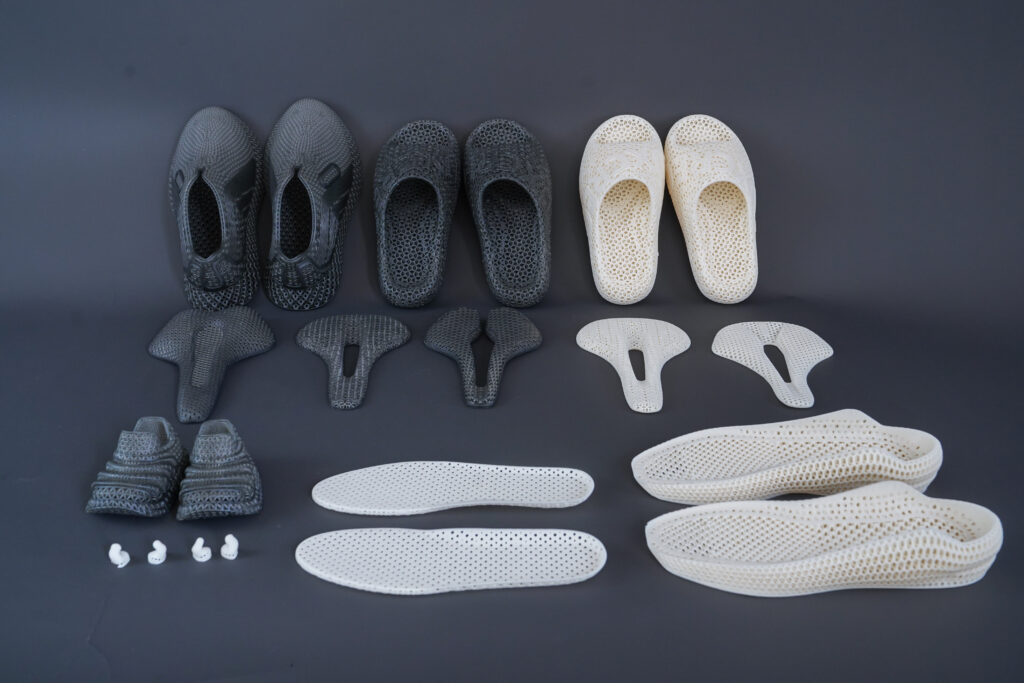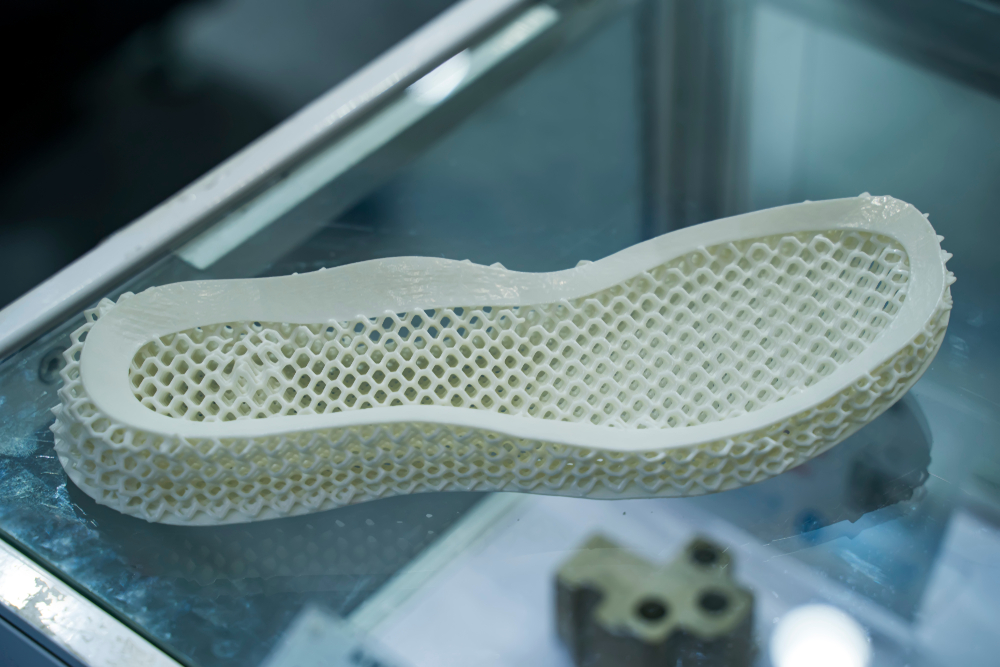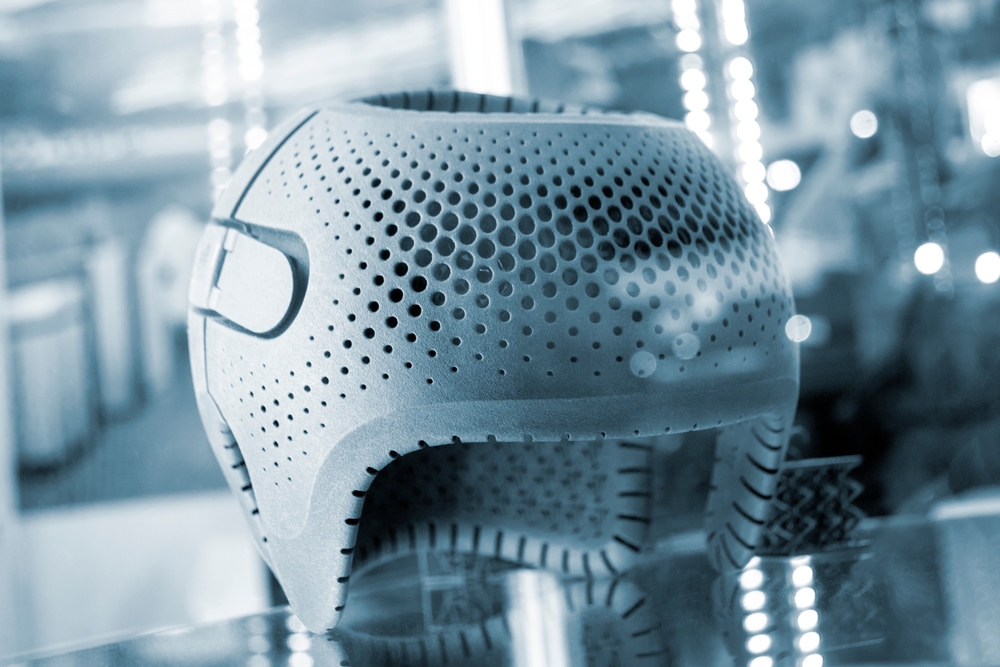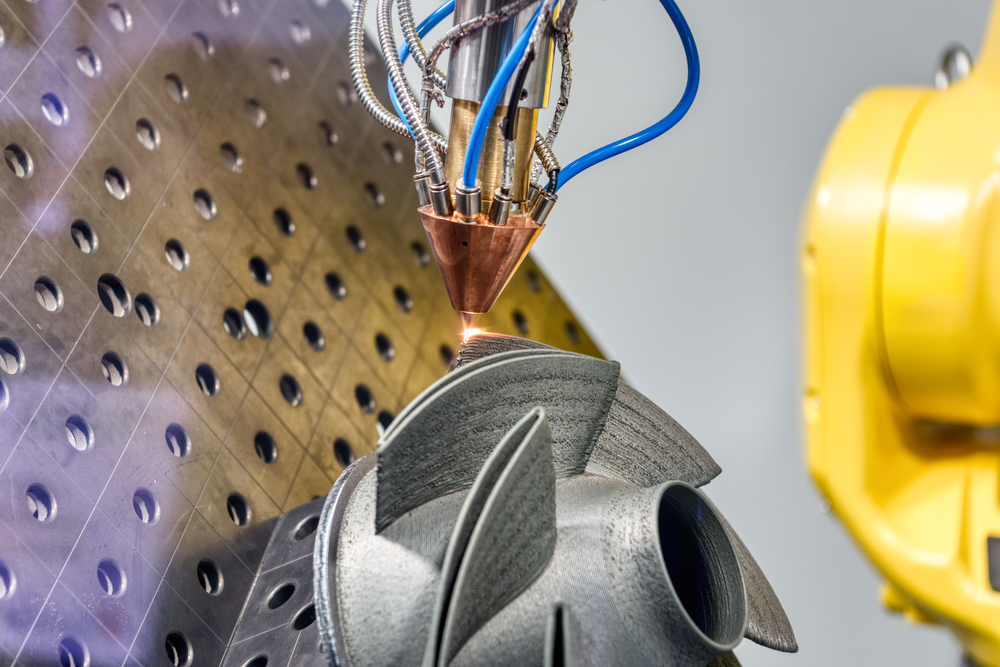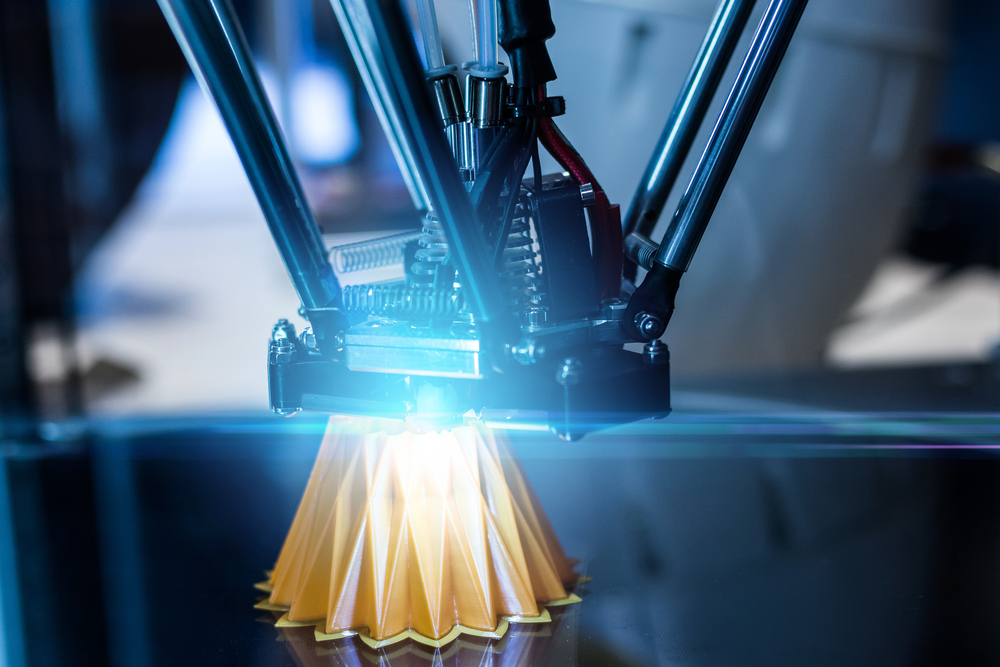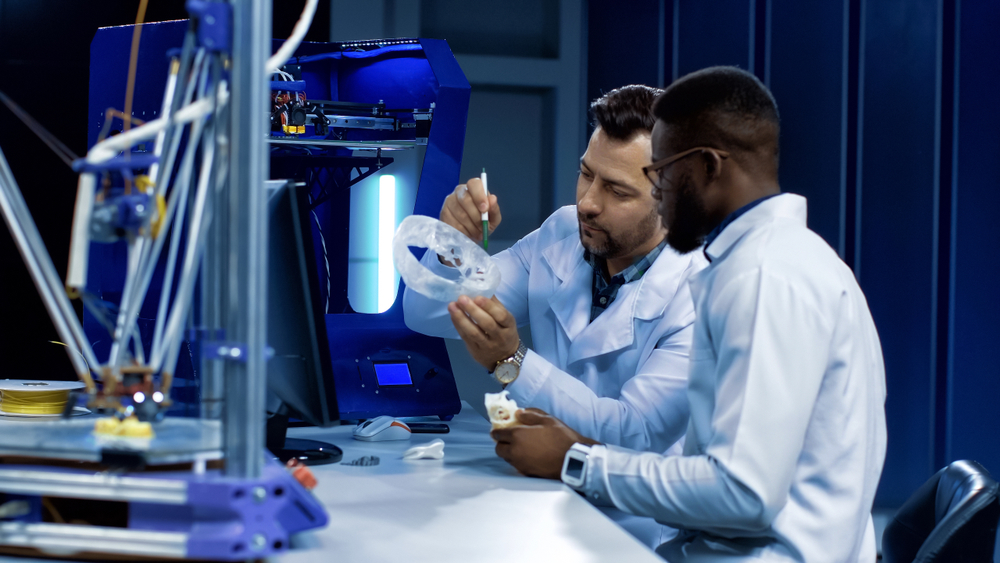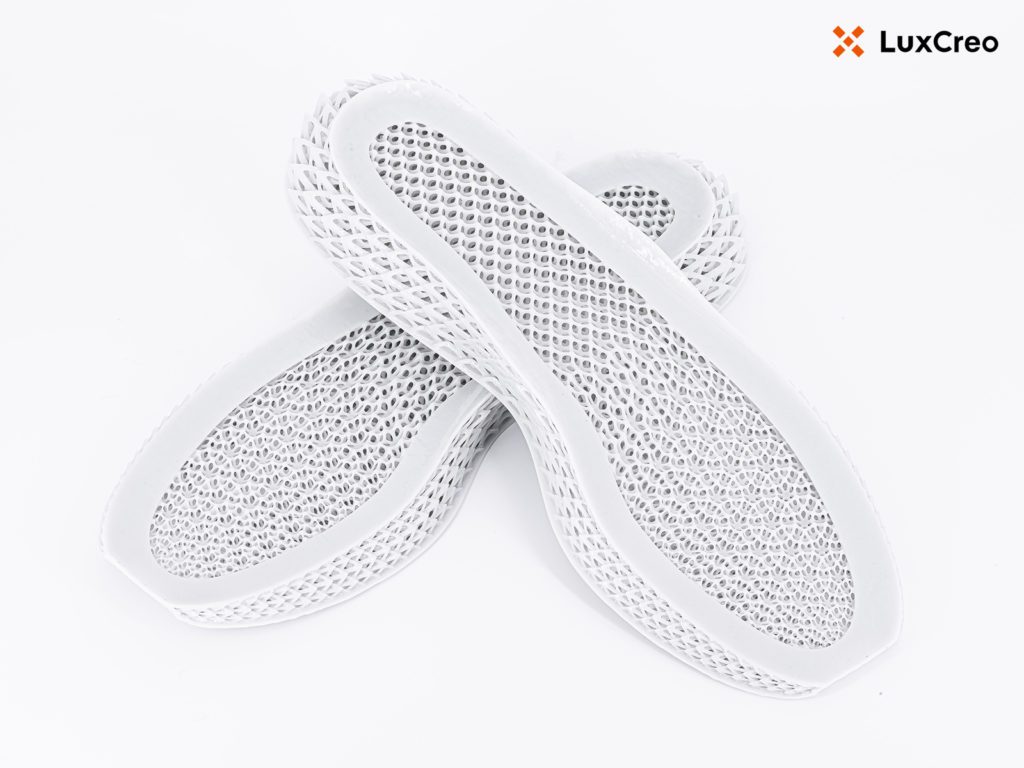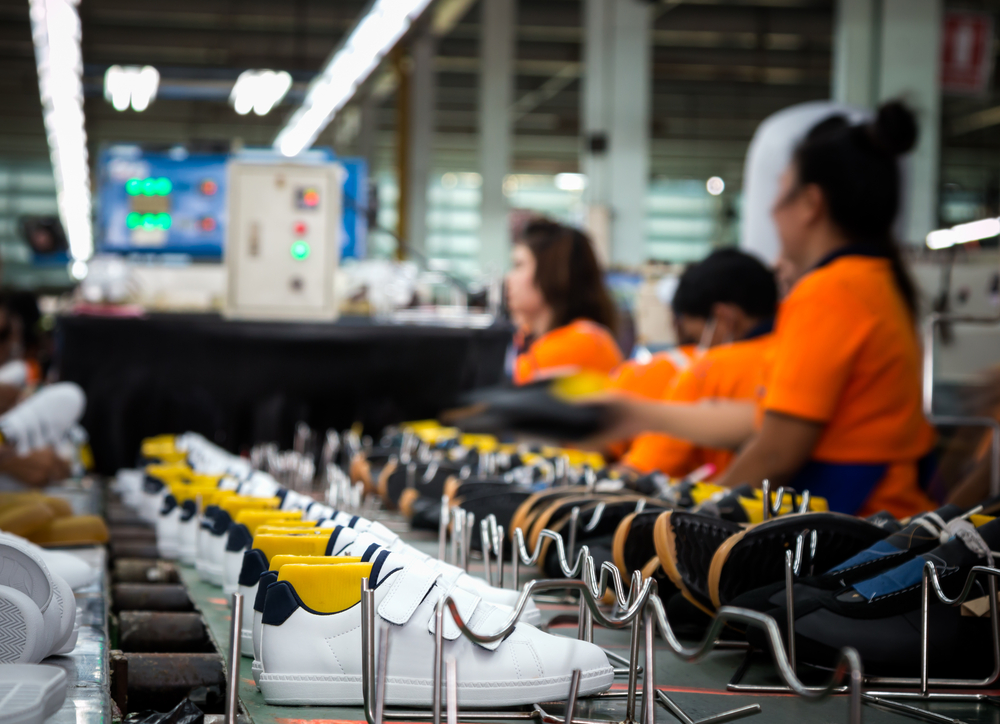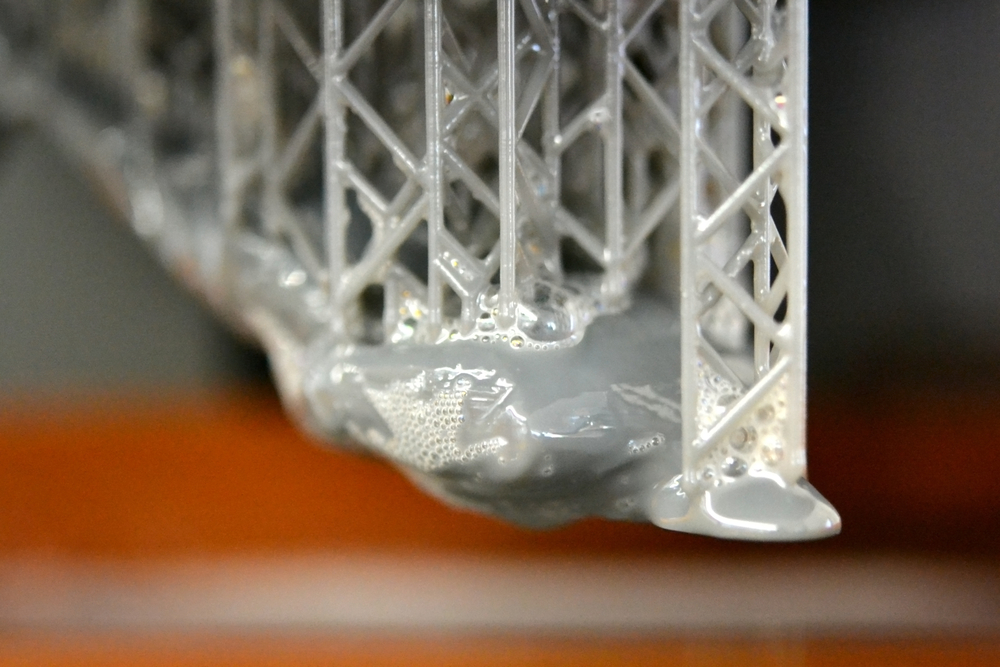Footwear
LuxCreo introduces two new open 1K functional elastomers for prototyping and production of 3D printed insoles and bike saddles.
EM 1K-H and EM 1K offer manufacturers better performance, color, price options, and access to LuxCreo Smart Factory Production Services supporting brands such as ASICS and PUMA. EM 1K-H and…
Read MoreFootwear Manufacturing Technology: Benefits of Smart Factory 3D Printing
Smart Factory3D printing enables companies to reduce labor steps, increase design freedom, and create opportunities for customization—here’s how:
Read MoreApplications of 3D Printing in Sports and Sports Medicine
When it comes to sports and sports medicine, using high-performance products can enhance athlete performance and recovery. 3D printing in sports and sports medicine products brings more customization and durability…
Read MoreTop Additive Manufacturing Materials by Industry
Some of the first materials used for 3D printing were photopolymers hardened with UV light, as demonstrated by the Japanese inventor Hideo Kodama in 1981. The range of available additive…
Read MoreHow to Make Manufacturing More Sustainable With 3D Printing Technology
Every year, American manufacturers generate and dispose of 7.6 billion tons of solid waste, according to data released by the EPA. Despite being recyclable, a significant portion of that waste…
Read MoreTop Seven Industries for Additive Manufacturing Applications
Additive manufacturing offers innovations, process improvements, and greater agility to many industries, including aerospace, dental, medical, and automotive. 3D printers are versatile and can produce complex or customized products. Manufacturers…
Read More3D Printing Applications in the Footwear Manufacturing Industry
The projected revenue increase demonstrates the continued adoption of additive manufacturing processes by footwear manufacturers. 3D printers have been available since the 1980s. However, many industries have only recently integrated 3D printing solutions into their production processes, as significant advances in machines, material, and software are not only meeting industry requirements but also enabling greater innovation with better performance production parts. Today many footwear companies use 3D printers to optimize design, prototyping, and full production.
Read MoreHow to Automate Footwear Manufacturing
In recent years, advancements in 3D printing technology are streamlining the manufacturing process. Footwear companies are leveraging 3D printers to optimize operations, enabling fully-functional prototypes and increased design freedom. 3D printing improves the footwear manufacturing process with greater automation, and 3D printed footwear is projected to globally generate over USD 1 billion by 2023 and USD 6.5 billion by 2029.
Read MoreHow 3D Printing Is Improving the Footwear Manufacturing Process
Traditional footwear manufacturing is a time-consuming process that often limits designs. With high tooling costs and production limitations, initial designs, tooling, and prototyping can take months to complete and require significant investments. The final product design must fit the production method, and processes, like injection molding, can constrain the design. Products need to be developed so that tools can be built for mass production. Designers who work with injection molding must often reconfigure their product layouts to meet production criteria after the prototyping stage.
Read MoreHow to Use 3D Printing Processes to Scale Up Manufacturing
Traditionally, a 3D printing process supported only functional prototypes or finished products. With advancements in 3D printing technologies and materials, the same machine and 3D printing process can produce prototypes and finished products. To scale, connected 3D printers can seamlessly print the same product at a 3D printing smart factory, making it easier to get a new product onto a production line for high volume manufacturing. Here’s an overview for getting a design into high-volume production with 3D printing.
Read More